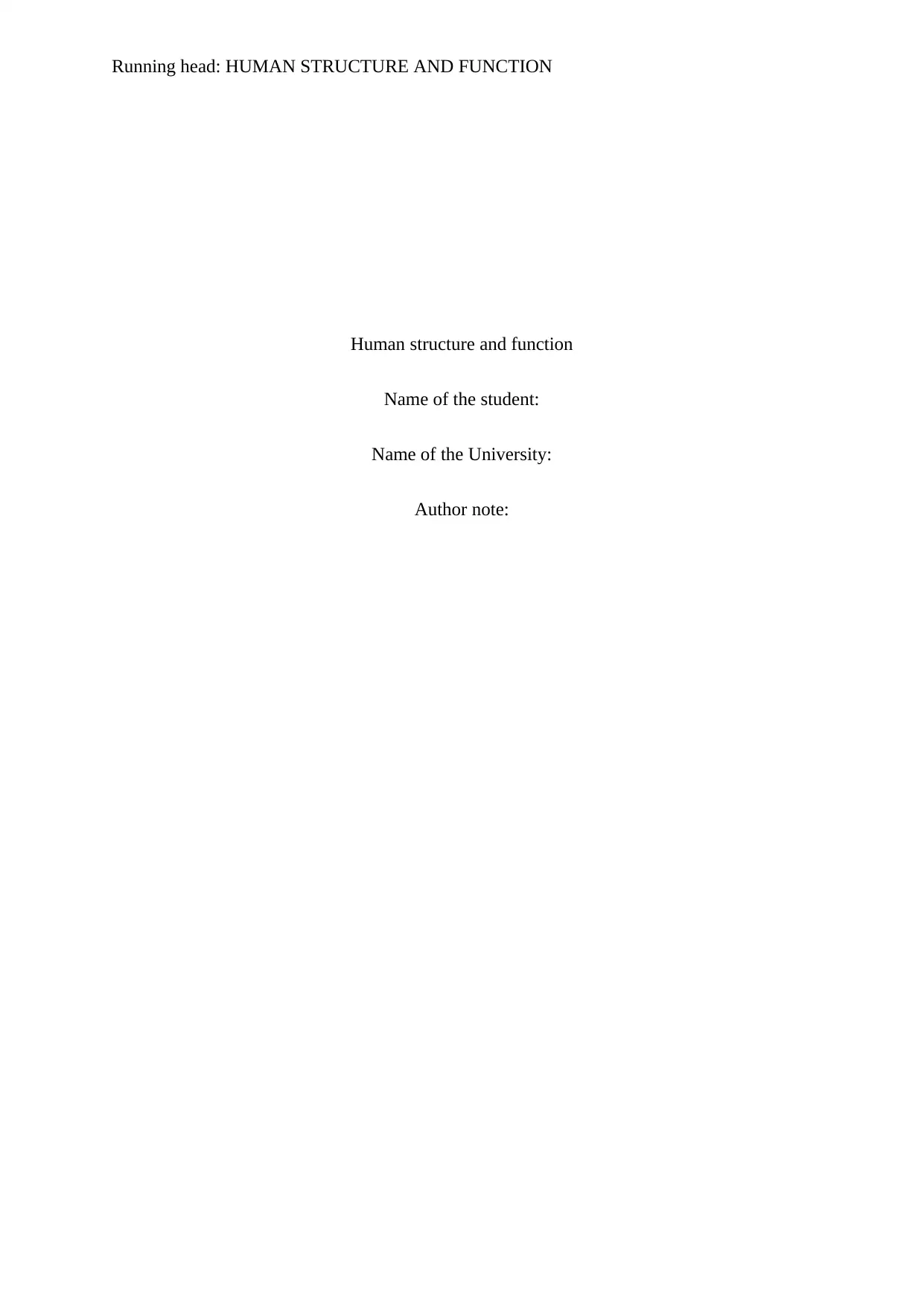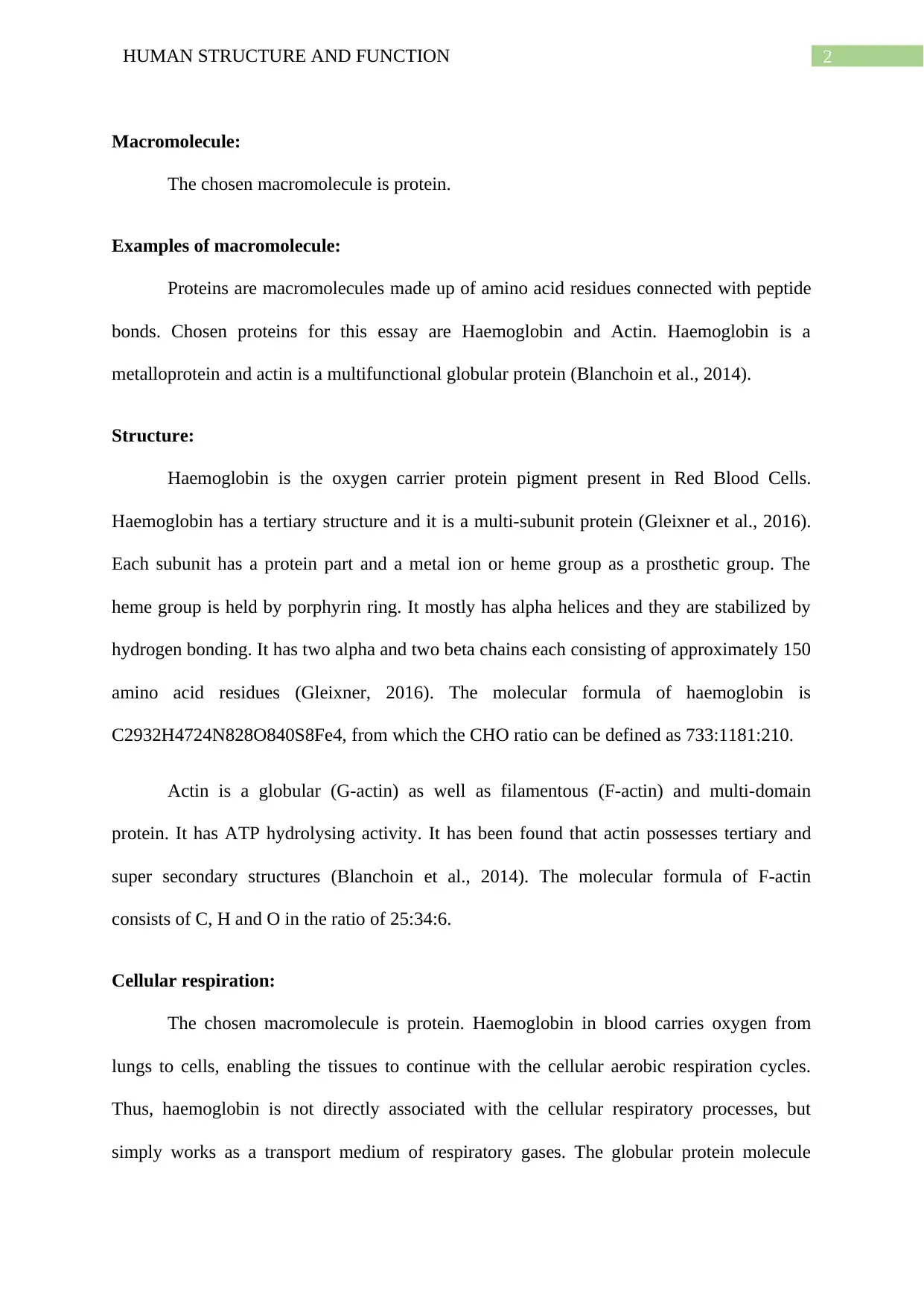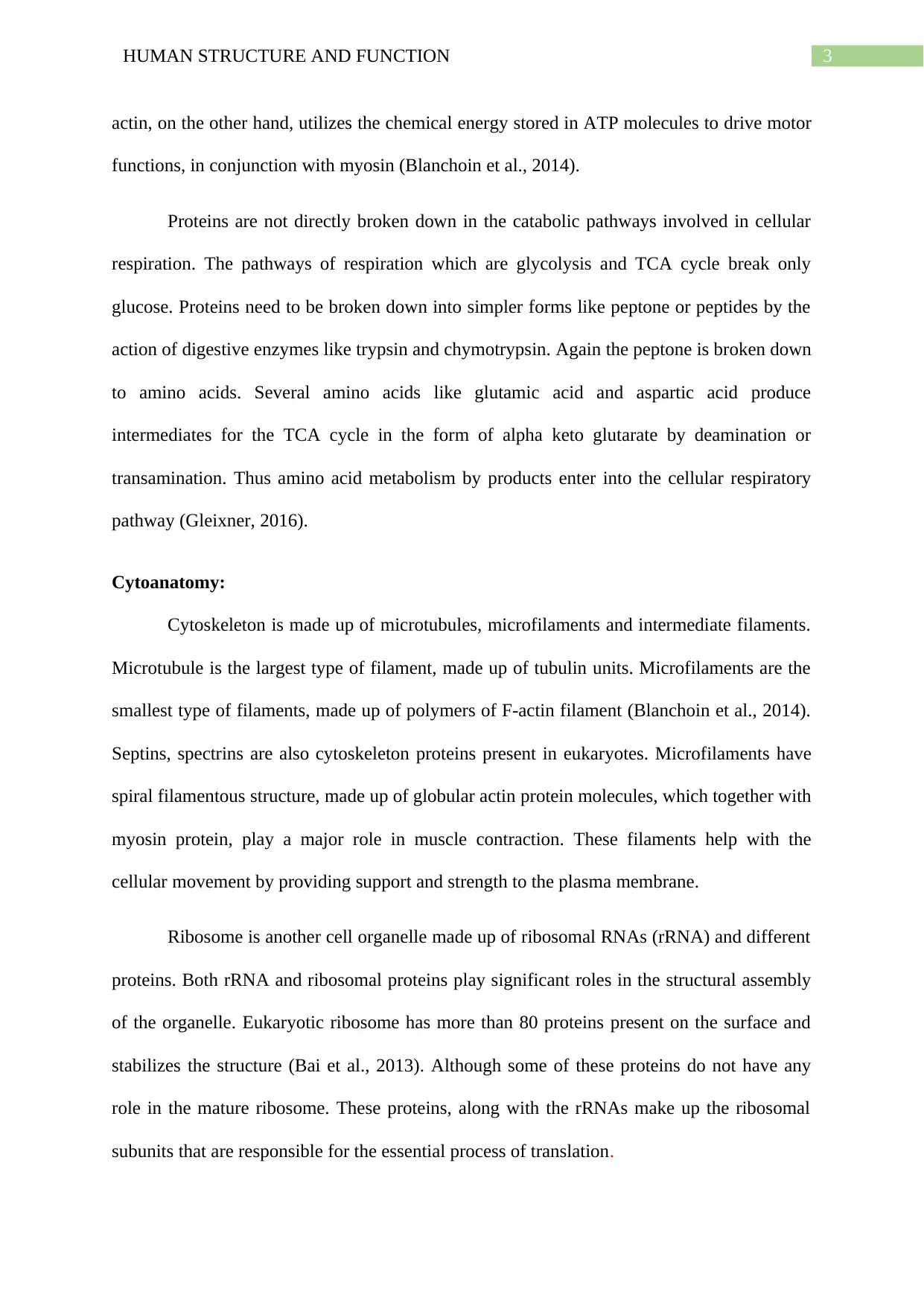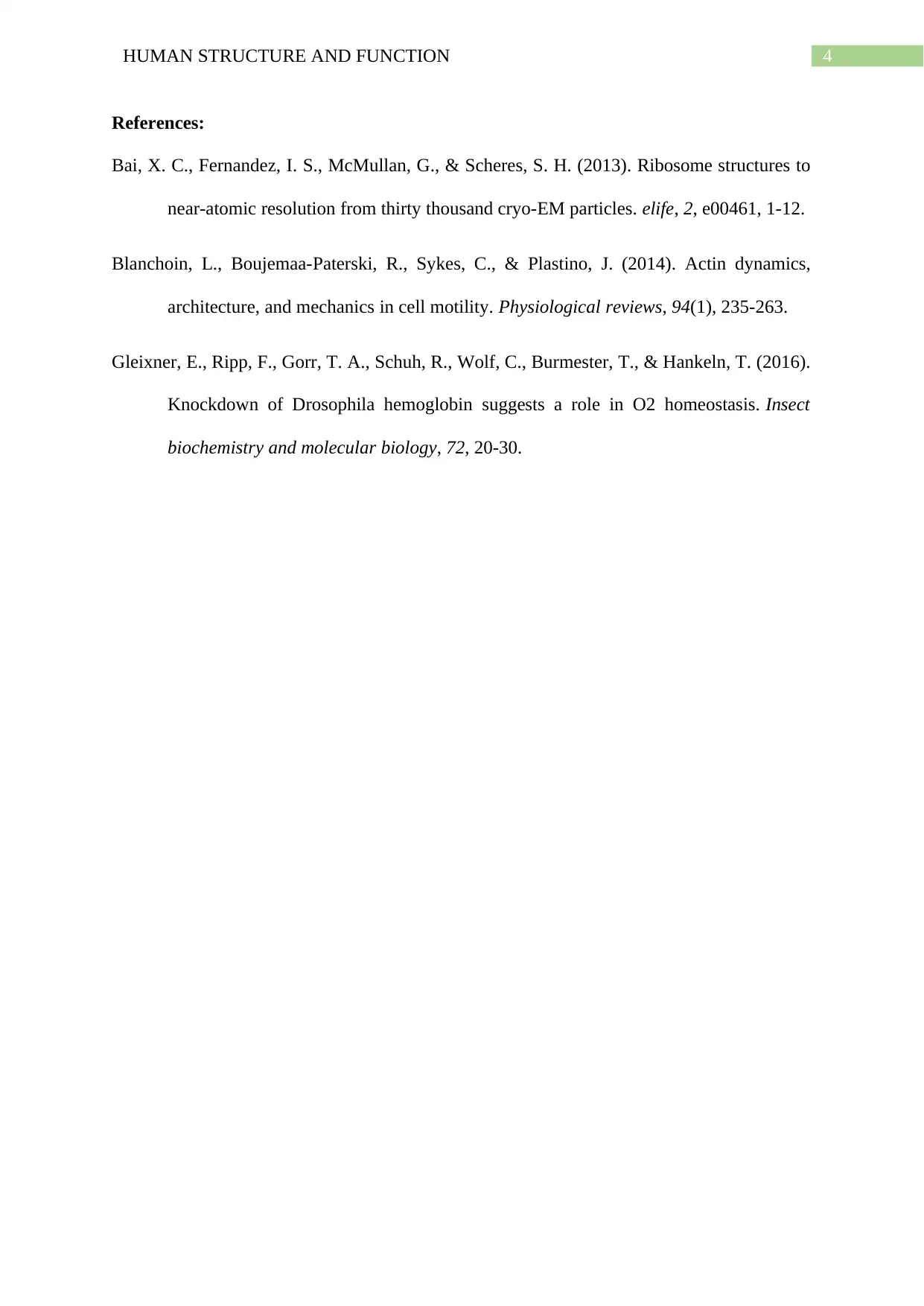University Essay: Human Structure and Function, SCH1134D
VerifiedAdded on 2023/06/10
|5
|845
|236
Essay
AI Summary
This essay delves into the intricacies of human structure and function, concentrating on the macromolecule protein. It begins by describing the general structure of proteins, followed by detailed examinations of two specific examples: hemoglobin and actin. The essay highlights their structural differences and diverse functions within the human body. Hemoglobin, a metalloprotein, is presented as the oxygen carrier in red blood cells, while actin, a multifunctional globular protein, plays a crucial role in cellular processes. The essay further explores the role of these macromolecules in cellular respiration, clarifying how hemoglobin facilitates oxygen transport and how actin utilizes ATP to drive motor functions. Additionally, the essay touches upon cytoanatomy, discussing the cytoskeleton's components, including microtubules, microfilaments, and ribosomes, and their respective functions. The essay concludes by referencing key scientific publications that support the presented information.
1 out of 5







![[object Object]](/_next/static/media/star-bottom.7253800d.svg)